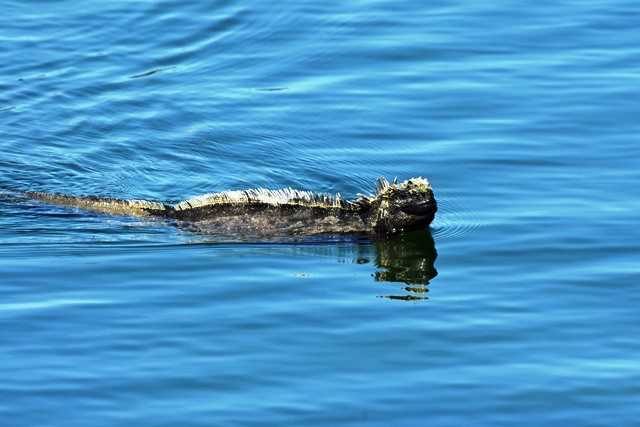Galápagos is a unique archipelago, and during our expedition we have seen that the islands differ quite a bit from one another. After a long navigation we reached the Western Isles by the early morning; the silhouettes of the young, shield volcanoes of Isabela and Fernandina were simply elegant and stunning in the morning sun. Our morning excursion took us to Punta Espinosa on Fernandina Island, one of the last pristine islands on earth. It was a surreal visit, as we had to walk over black, young lava flows where apparently life is scarce. However, upon a closer look we realized that marine iguanas were simply everywhere, although very well camouflaged due to their dark coloration. We kept walking along the trail to find a number of tidal pools, where various creatures fed on the abundant seaweed: damselfish, marine iguanas and Sally Lightfoot crabs were making the most of this feast. A small colony of Galápagos sea lions inhabits this area, and a couple of very young pups lying on the sand with their mothers were certainly everybody’s favorites. Punta Espinosa is the home to the flightless cormorants, and on our walk we reached the rocky outcrop where a couple has been nesting for several weeks; for now, the chicks look healthy and well looked after. An apex predator, the Galápagos hawk, kept a keen eye on the aggregations of marine iguanas from the top of some mangrove trees. Life is primitive here, and the whole area felt surreal.
In the afternoon we navigated back north towards Punta Vicente Roca, in the northwestern region of Isabela. This is one of the most amazing snorkeling sites in the archipelago, due to the number of Pacific green sea turtles that feed in the area. Some of our guests joined the snorkeling activity, and despite the cold water temperatures, they were amazed by the number of turtles either feeding or resting peacefully on the sandy bottom. A little later we returned to this very same site for a Zodiac ride; we drove along the shoreline to find Galápagos fur seals, diving blue-footed boobies, Galápagos shearwaters, Nazca boobies and brown noddy terns. Upon our return, we navigated immediately northbound to cross the equator, for a ceremony that is a must, especially if you have never done it before! To top it all off, we were fortunate enough to spot several humpback whales! It felt as if nothing could top the experiences of today.








